一、 Discuz 之 block 简介
discuz 的 block 指的是 diy 功能中可自定义表单样式,表单标题,并实现自己来设置数据调用。可以从门户->模块管理->数据调用中进去,并添加新数据。
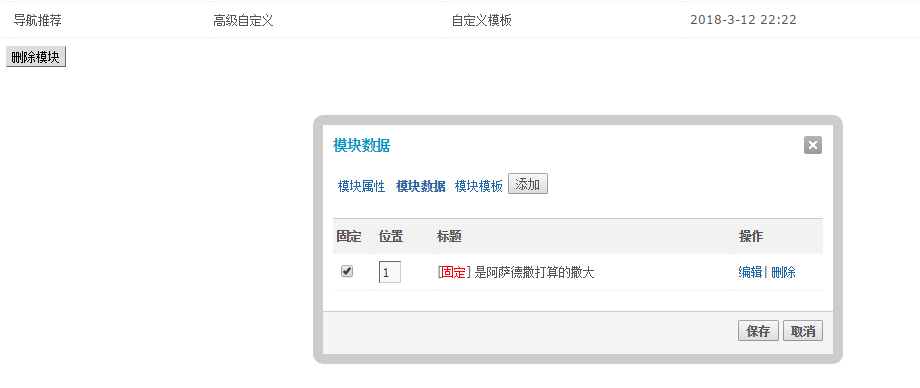
通过内部调用或者外部调用可以将数据调用到任何一个位置。
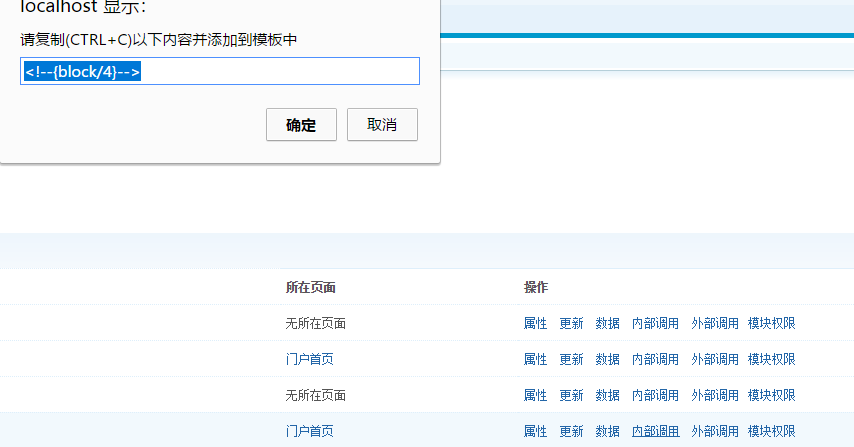
配置文件存放在 sourceclassblock 目录下。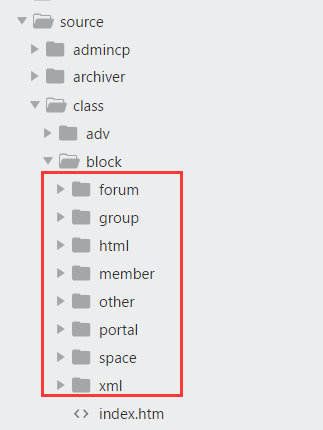
二、文件解析
用户想自定义表单字段来进行填写内容的话需要重新创建文件
*/
//模块名称 模块分类
function name() {
return "自己的数据";
}
/**
* 必须!
* 返回一个数组: 第一个值为本数据类所在的模块分类;第二个值为模块分类显示的名称 (显示在 DIY 模块面板)
* @return
*/
function blockclass(){
return array('othermk', "[开发] 模块");
}
/**
* 必须!
* 返回数据类中可供 「模块样式」 使用的字段。
* 格式见示例:
* name 为该字段的显示名称
* formtype 决定编辑单条数据时该字段的显示方式: 类型有: text, textarea, date, title, summary, pic; 详见 portalcp_block.htm 模板 (搜 $field[formtype])
* datatype 决定该字段的数据展示,类型有: string, int, date, title, summary, pic; 详见 function_block.php 中 block_template 函数
* @return
*/
//这个模块要返回的字段
function fields() {
return array(
'title' => array('name' => '名称', 'formtype' => 'title', 'datatype' => 'title'),
'url' => array('name' => '地址', 'formtype' => 'text', 'datatype' => 'string'),
'img' => array('name' => '图片', 'formtype' => 'pic', 'datatype' => 'pic'),
);
}
/**
* 必须!
* 返回使用本数据类调用数据时的设置项
* 格式见示例:
* title 为显示的名称
* type 为表单类型, 有: text, password, number, textarea, radio, select, mselect, mradio, mcheckbox, calendar; 详见 function_block.php 中 block_makeform() 函数
* @return
*/
//设置需要帅选的参数 然后参数会自动传给 getdata($style, $parameter)
function getsetting() {
global $_G;
$settings = array();
$settings = array(
'titlelength' => array(
'title' => '标题',
'type' => 'text',
'default' => ""
)
);
return $settings;
}
/**
* 必须!
* 处理设置参数,返回数据
* 返回数据有两种:
* 一种是返回 html,放到模块 summary 字段,直接显示; 返回格式为: array('html'=>'返回内容', 'data'=>null)
* 一种是返回 data,通过模块样式渲染后展示,返回的数据应该包含 fields() 函数中指定的所有字段; 返回格式为: array('html'=>'', 'data'=>array(array('title'=>'value1'), array('title'=>'value2')))
* 特别的:
* parameter 参数包含 getsetting() 提交后的内容;并附加了字段:
* items ,为用户指定显示的模块数据条数;
* bannedids ,为用户选择屏蔽某数据时记录在模块中的该数据 id 。 应该在获取数据时屏蔽该数据;
*
* 如果返回的数据给 data, 那么应该包含 fields() 函数指定的所有字段。并附加以下字段:
* id 标志该数据的 id,如果用户屏蔽某数据时,会将该数据的 id 添加到 parameter[bannedids] 里
* idtype 标志该数据的 idtype
*
* @param $style 模块样式 (见 common_block_style 表) 。 可以根据模块样式中用到的字段来选择性的获取/不获取某些数据
* @param $parameter 用户对 getsetting() 给出的表单提交后的内容。
* @return
*/
//返回数据的函数,自己发挥吧,一定要保证你返回的字段 在上个 fields 函数里面要有
function getdata($style, $parameter) {
// 返回summary
return array('html' => '这是一个演示模块数据类
', 'data' => null);
// 返回数据
// 需要注意: 除 id,idtype, title, url, pic, picflag, summary 几个字段外,其它字段需要放到 fields 数组里。 可以参考系统内置模块类 source/class/block/block_thread.php
return array('html'=>'', 'data' => array(
array(
'id' => '1',
'idtype' => 'sampleid',
'title' => 'title1',
'url' => '#',
'pic' => 'nophoto.gif',
'picflag' => '1',
'summary' => '',
'fields' => array(
'field1' => 'value1'
)
)
));
}
}
?> 1 、 name 函数
/**
* 必须!
* 返回本数据调用类的显示名称 (显示在创建模块时选择 「模块数据」 的下拉列表里)
* @return
*/
//模块名称 模块分类
function name() {
return "自己的数据";
} 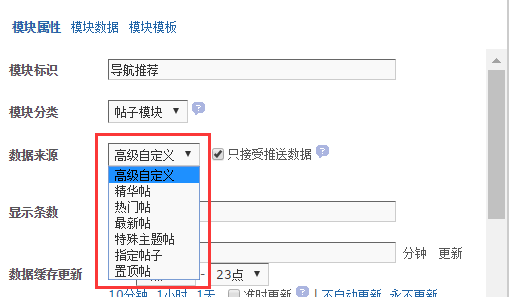
2 、 blockclass 函数
/**
* 必须!
* 返回一个数组: 第一个值为本数据类所在的模块分类;第二个值为模块分类显示的名称 (显示在 DIY 模块面板)
* @return
*/
function blockclass(){
return array('othermk', "[开发] 模块");
} 
相当于给该 diy 命名
3 、 fields 函数
/**
* 必须!
* 返回数据类中可供 「模块样式」 使用的字段。
* 格式见示例:
* name 为该字段的显示名称
* formtype 决定编辑单条数据时该字段的显示方式: 类型有: text, textarea, date, title, summary, pic; 详见 portalcp_block.htm 模板 (搜 $field[formtype])
* datatype 决定该字段的数据展示,类型有: string, int, date, title, summary, pic; 详见 function_block.php 中 block_template 函数
* @return
*/
//这个模块要返回的字段
function fields() {
return array(
'title' => array('name' => '名称', 'formtype' => 'title', 'datatype' => 'title'),
'url' => array('name' => '地址', 'formtype' => 'text', 'datatype' => 'string'),
'img' => array('name' => '图片', 'formtype' => 'pic', 'datatype' => 'pic'),
);
}
这个函数就是表单的参数函数,可以通过这个来设置表单分类名称。比如活动中:活动标题、地点、时间、参与方式啥的,都可以进行自定义,大概效果如图所示。
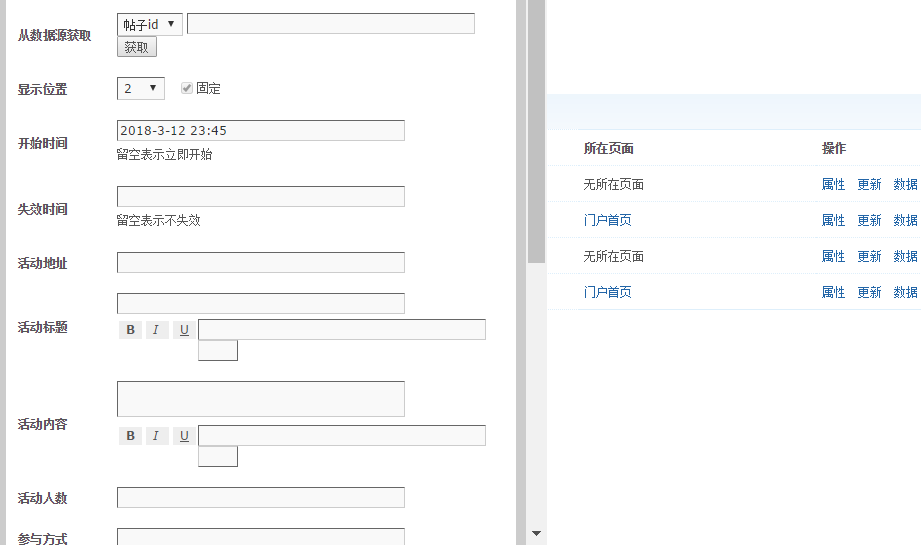
4 、 getsetting 函数
/**
* 必须!
* 返回使用本数据类调用数据时的设置项
* 格式见示例:
* title 为显示的名称
* type 为表单类型, 有: text, password, number, textarea, radio, select, mselect, mradio, mcheckbox, calendar; 详见 function_block.php 中 block_makeform() 函数
* @return
*/
//设置需要帅选的参数 然后参数会自动传给 getdata($style, $parameter)
function getsetting() {
global $_G;
$settings = array();
$settings = array(
'titlelength' => array(
'title' => '标题',
'type' => 'text',
'default' => ""
)
);
return $settings;
} 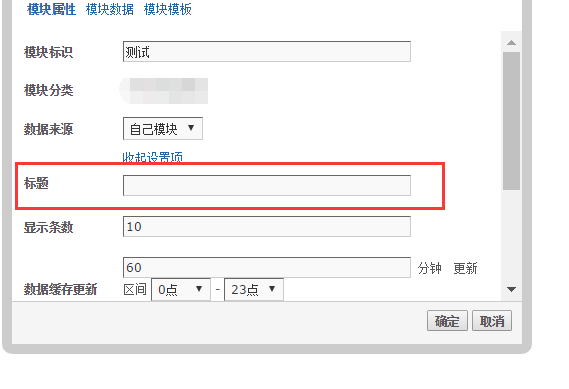
三、数据调用
1 、简单调用
这个暂时不做说明,用 [loop] 调用即可。
2 、用函数调用
block_get 函数
function block_get_batch($parameter) {
global $_G;
$bids = $parameter && is_array($parameter) ? $parameter : ($parameter ? explode(',', $parameter) : array());
.
.
.
if($styleids) {
block_getstyle($styleids);
}
}可以用这个函数进行调用表中数据。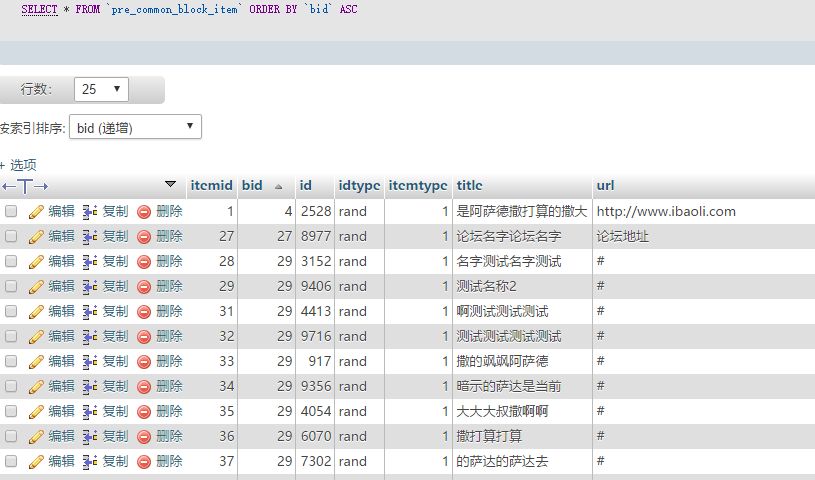
因为在 function_core.php 中简化了函数 block_get_batch 可以用 block_get 代替。
function block_get($parameter) {
include_once libfile('function/block');
block_get_batch($parameter);
}使用方法
//$parameter 可以是多个值,如:$parameter = '31,32,33';
$parameter = '31';
$bid= 31;
$items = block_get($parameter);
var_dump($_G['block'][$bid]['itemlist']);
block_display 函数
function block_display($bid) {
include_once libfile('function/block');
block_display_batch($bid);
}首先要在页面使用 block_get 函数,然后使用 block_display 函数,函数的意思很明显,获取和展示。并且展示的时候是带有 diy 模板样式的。